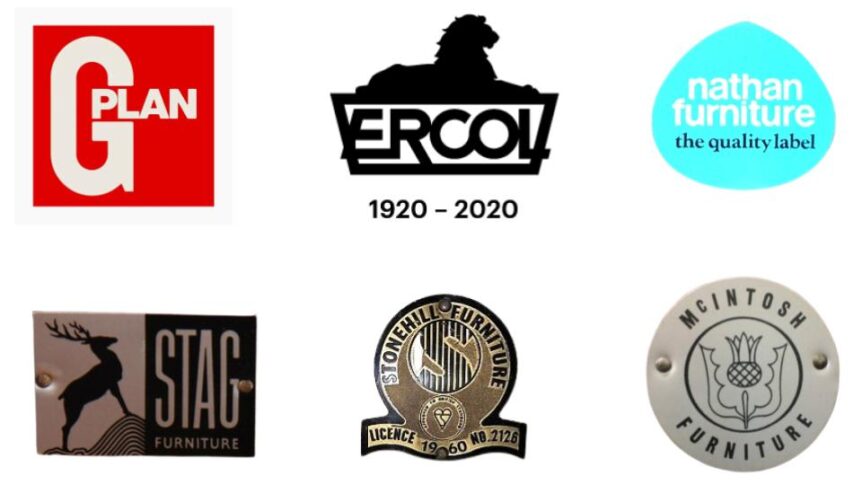Discover the Top Vintage British Furniture Brands That Defined Mid-Century Style
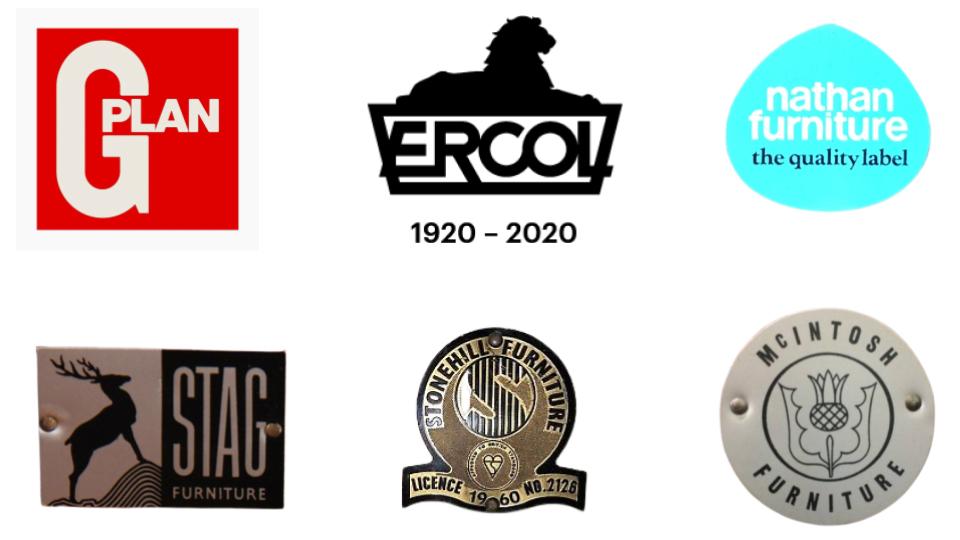
Vintage furniture has become very popular in the last 10 years as people look to be more sustainable, opting to buy used items instead of new. The State of Consumer Spending Report finds that sustainability is a priority for all demographics and according to the online vintage retailer 1stDibs, 60% of sales are now made by millennials (25-32 years old).
A lot of vintage furniture made between 1950 and 1970 was also designed to be clean and minimal which fits very well with our contemporary homes of light colours.
So if you looking to buy some vintage furniture for your home or even to sell as part of a new business you may be wondering what are some of the best vintage furniture brands to look out for?
Some of the best vintage furniture brands include Ercol which produced the iconic Quaker chairs; G-Plan which made stylish sideboards; Jentique; Nathan and Scottish furniture manufacturers Mcintosh.
These brands were just a handful of well-known vintage furniture manufacturers of the 1950s and ’60s who produced the stylish and minimal pieces of furniture that are known today as “midcentury modern”.
In this article, I’ve also added more brands to look out for that produced some great examples of mid-century modern furniture in the United Kingdom between the 1950s and 1970s.
Contents
- Ercol
- G-Plan
- Nathan
- Gordon Russell
- Stag
- Robert Heritage
- Archie Shine
- Stonehill
- Lebus
- Jentique
- McIntosh
- Beautility
- Schreiber
- Parker Knoll
- Hille
- Meredew
- Avalon
1. Ercol
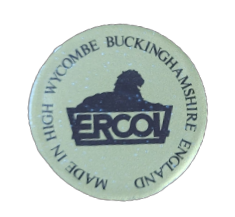
One of the most collectible vintage furniture brands from the 1950s-1970s is Ercol. Ercol was founded in 1920 by Lucian Ercolani in High Wycombe, which was known historically for its chair making.
Ercol furniture from this post-war era is defined by its simplicity and practicality of design using quality woods such as ash, beech and elm. Some of their most famous designs which are now considered collectible vintage items include the Butterfly Stool, Quaker Chair and Studio Couch.
Related article: How to Identify Ercol Furniture
2. G-Plan

G-Plan was an innovative British furniture manufacturer making affordable, modernist inspired furniture between 1953-1970.
Founded by E Gomme, G-Plan aimed to bring stylish and functional Scandinavian-influenced teak furniture to the mass market in the UK using new materials and production techniques.
Some of their most famous designs during the mid-20th century include the Fresco range with its distinct lowered display cabinet and award-winning Astro coffee table.
3. Nathan

Nathan is another iconic British furniture brand from the post-war period. Founded in London in 1936, Nathan became well known for its high quality cabinetry and sideboards.
They were one of the early pioneers in making furniture from teak, beech and rosewood veneers which allowed them to produce the clean lines and minimalist styles that became synonymous with mid century design.
Some collectible Nathan furniture pieces to look out for are the low sideboards and minimalist dining sets like the Apollo dining table and chairs.
Related article: How To Identify Nathan Furniture
4. Gordon Russell

Gordon Russell Ltd was a British furniture manufacturer established in Broadway, England in 1904.
The company thrived during the mid 20th century thanks to designers like Sir Gordon Russell himself and later John and Sylvia Reid. They took inspiration from the Scandinavian influences of simple functionality and clean lines to produce their own take on contemporary Modernist furniture.
Classic Gordon Russell pieces from this post-war period include the 1953 Him and Her chairs and the 62 Chair designed by Robin Day in 1952.
5. Stag

Stag furniture was a popular brand in the United Kingdom during the 1950s and ’60s. Known originally as W.J. Multifibre, they specialized in bedroom furniture, often using aromatic red cedar from Canada.
Classic Stag designs from this mid-century period include the Minstrel chest with patented T-shaped legs and the Stag wipe-clean laminated finish wardrobes with alloy handles. These stylish and innovative pieces made Stag a popular furniture choice in many British homes.
Related article: Stag Furniture Ranges – A Look at the Best of British Mid-Century Design
6. Robert Heritage
The Robert Heritage furniture company was founded in 1864 in Manchester, England. During the mid 20th century they produced high quality cabinetry and sideboards very much in the sought after mid century modern style.
Using quality materials like teak, mahogany and walnut veneers their products were more at the luxury end of the market. Iconic Robert Heritage pieces from this era include the low Connaught drinks cabinet and minimalist yet stylish No. 415 sideboard.
7. Archie Shine
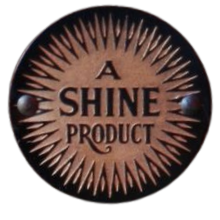
Archie Shine Ltd was founded in London in 1934 by Archibald Shine. They produced high quality bedroom and dining room furniture often using fruitwoods and walnut veneers with sleek wrap-around aluminium trim details.
Archie Shine’s mid-century offerings are typified by the 1956 Slimline bedside cabinet with its patented aluminium framing and the attractive bow fronted Pembroke sideboard.
8. Stonehill
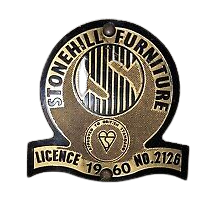
The Stonehill furniture company operated in London between 1946-1981. Their earlier mid-century pieces were made from mahogany before they evolved to offer Scandinavian influenced bedroom and dining ranges using imported teak.
Stonehill’s mid-century offerings included the clean lined teak Extending Dining range and bedroom pieces like the Model 70 wardrobe with its cleverly hidden hanging space. Their simple but elegantly styled furniture sums up the essence of minimalist mid-century design.
9. Lebus
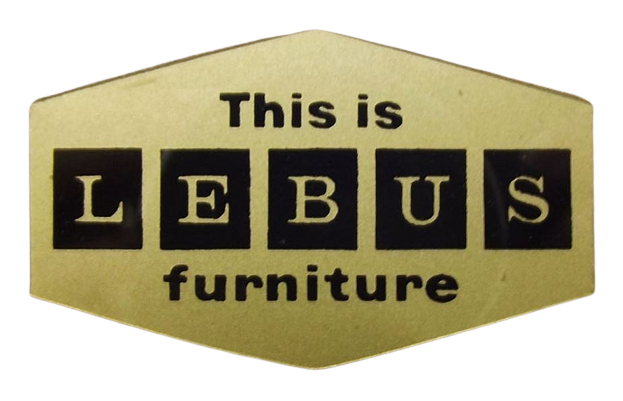
Lebus is one of the oldest British furniture manufacturers dating back to 1870. During the 1950s-1970s they were pioneering new materials like fiberglass to create affordable contemporary furniture ranges.
Their glossy white and grey “Mammoth” range made from polypropylene was a hit with young homeowners and their teak dining sets like the Sylva table and chairs remain collectible today. Lebus was able to successfully blend traditional British craftsmanship with new technology to offer on-trend mid-century designs.
10. Jentique

Jentique was founded by Jenkinson & Co in 1895 in North London. They produced high quality reproduction 18th century furniture but the company really came into its own in the post war years.
Under designer Patricia Kay they created fashionable mid century inspired furniture ranges like the slim line Campaign range using imported Nigerian mahogany. Other influential mid-century designers for Jentique included Clive Latimer whose 1958 Spanish chest remains an iconic piece.
11. McIntosh
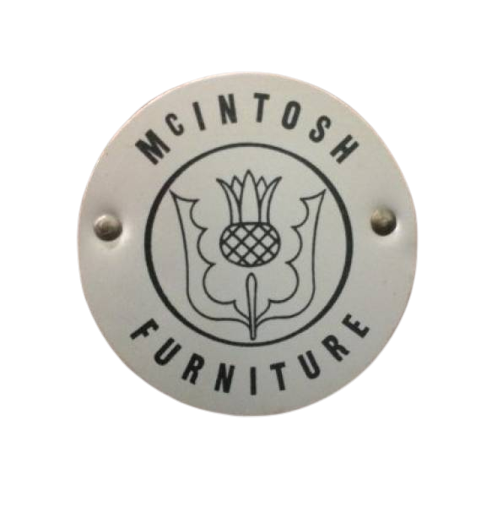
This esteemed Scottish furniture maker can trace its origins all the way back to 1835. Their mid-century designs from the 1950s-1970s show strong Scandinavian influences like clean aesthetic lines and quality teak materials.
Sought after McIntosh pieces from this period include dining sets like the extending Finmark table and sideboards including the desirable blond oak Highboard with its distinctive raised legs.
Related article: How To Identify Mcintosh Of Kirkcaldy Furniture
12. Beautility
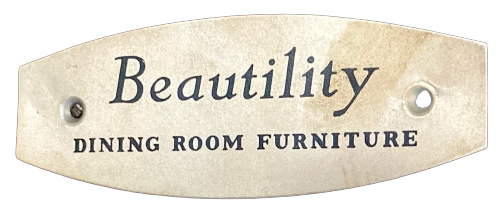
Beautility furniture represents an interesting part of British design history. With raw materials severely limited during WWII, the British government set up the Utility Furniture Scheme in 1942. Furniture makers like Beautility were only allowed to use certain rationed materials to create simple but practical furniture for the wartime masses.
Although restrictive, these limitations led to ingenious space-saving and multi-functional designs. Iconic pieces include the Beautility folding CR1 table and the space-saving bedside cabinet with retractable washstand. Beautility’s wartime designs proved influential even after rationing ended.
13. Schreiber

The Schreiber furniture company was formed in Lancashire in 1957 and soon became one of the market leaders in affordable fitted kitchen and bedroom furniture.
They were pioneers in using the latest materials like Formica and manufacturing techniques like foam moulding to create affordable but fashionable furniture to cater to the mass market. Iconic mid-century Schreiber designs include the Tarva bedroom suite and the Mistral range.
14. Parker Knoll

This enduring British furniture maker can trace its origins back to the late 18th century. After WWII Parker Knoll embraced the clean sleek lines and new materials of mid-century modern trends to great success.
Parker Knoll’s 1948 MK3 range used quality teak and beech timbers and innovative designs like the Drop Arm Vienna chair to create bestselling contemporary furniture that still holds wide appeal today.
15. Hille

This esteemed furniture maker was founded in London in 1906. But it was in the postwar years that Hille came into its own with the hire of pioneering designer Robin Day in 1952.
Robin Day’s moulded plywood designs like the iconic 1952 Hillestak chair brought affordable quality furniture to the mass market. Later acquisitions of designs like the 1963 Don Mattress sofa cemented Hille as one of the most influential British furniture names of the mid-century era.
16. Meredew
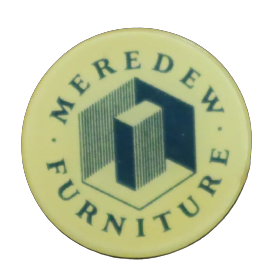
The Meredew furniture company was founded in London in 1926 and soon became known for its high quality cabinetry and dining sets. Their designs from the 1950s-70s included clean-lined Scandinavian inspired pieces with beautiful imported timbers and innovative storage solutions.
Iconic mid-century designs include the low sideboard from their E200 range featuring rich walnut veneers, tapered legs and expansive storage space. Meredew also offered versatile extending dining tables like the Sigford in oak or mahogany with central partitions that allowed two sizes to suit different occasions. Their fusion of minimalist forms and clever multifunctional details encapsulate quintessential mid-century style.
17. Avalon

Originally named Wake & Dean, Avalon took over the company in the 1960’s and began manufacturing furniture in Yatton, Somerset . As the 1950s brought a thirst for contemporary style, Avalon designs embraced minimalism and new materials like Formica plastic laminates.
Their sleek 1953 AB1 sideboard with its distinctive curved drawers shows how Avalon blended wood veneers and innovative materials to create fashionable yet affordable furniture. Other iconic designs include the Bryn extending dining table offered in rich teak or walnut veneers with tapered legs and leaf insert.
Avalon stood out with their visionary designers who brought accessible mid-century style to the growing postwar middle classes.
Related articles:
- 10 Best Vintage Danish Furniture Brands of the 1960s and 1970s
- 15 Best Vintage American Furniture Brands
- How To Make a Modern House Look Vintage
Related Questions
What is 60s-style furniture called?
The style of furniture made during the 1960s is referred to by various names including Mid-Century Modern, Retro Modern and Contemporary Style.
Mid-Century Modern is perhaps the most widely used term and refers to clean-lined furniture with minimal ornamentation influenced by Scandinavian design and the Modernism art movement.
Popular materials included teak, walnut and imported rosewood. Formica laminates were also widely used on cabinetry and dining tables. These allowed furniture makers to produce the sleek silhouettes with gently tapered legs that defined the 1960s style.
Commonly found mid-century designs from the 60s include:
- Low sideboards and credenzas
- Extending teak dining tables with simple tapered legs
- Sofas and chairs with tapered arms and legs
- Splayed leg coffee tables
- Egg chairs and sloped armchairs
- Bureau bookcases and sideboards
- Cabinets and media units with sliding doors
The 60s was a time of increasing youth culture and social change. So furniture evolved from the more traditional 50s style to embrace more contemporary materials and futuristic shapes. But the overall look still remained clean, graceful and understated compared to later decades.
What is 1960s furniture made of?
There were a variety of materials used to construct the minimalist and modernist 1960s furniture styles:
- Teak – Teak imported from South-East Asia was widely used in the 1960s for its warm brown tones and durability. Danish influence made teak a popular choice.
- Rosewood – An imported dark wood often used for cabinetry. Prized for its decorative grain.
- Walnut – Walnut veneers were used on many mid-century cabinetry pieces and dining tables.
- Fiberboard – Inexpensive fiberboard was used on mass produced pieces and then finished with wood veneer or laminate.
- Formica – Formica plastic laminates were adhered to fiberboard to create glossy surfaced cabinetry in bold 60s colors like turquoise.
- Leather – Leather still featured on higher end lounge chairs and sofas, bringing texture and warmth.
- Fabrics – Natural fibers like wool were popular on upholstered pieces, along with leatherette and plasticized fabrics.
- Chrome – Splayed legged coffee and side tables often used chrome rather than wood for the legs.
These materials all helped create furniture with the smooth surfaces, gentle lines and airy silhouette that defined the 1960s mid-century aesthetic. While still valuing quality craftsmanship, new manufactured materials allowed for mass production to meet demand.
So there you have it – some of the best and most influential British mid-century modern furniture brands to look for from the 1950s-1970s. With their combination of quality materials, craftsmanship, and contemporary styling, it’s not surprising these designs continue to be collectible and popular in homes today.
Owning a piece by one of these iconic vintage brands allows you to own a little slice of design history. So for any vintage devotees or mid-century design lovers, be sure to look out for furniture from these exceptional British manufacturers when sourcing your next vintage treasure!

